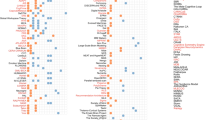Abstract
On many of the idealized models of human cognition and behavior in use by philosophers, agents are represented as having a single corpus of beliefs which (a) is consistent and deductively closed, and (b) guides all of their (rational, deliberate, intentional) actions all the time. In graded-belief frameworks, agents are represented as having a single, coherent distribution of credences, which guides all of their (rational, deliberate, intentional) actions all of the time. It’s clear that actual human beings don’t live up to this idealization. The systems of belief that we in fact have are fragmented. Rather than having a single system of beliefs that guides all of our behavior all of the time, we have a number of distinct, compartmentalized systems of belief, different ones of which drive different aspects of our behavior in different contexts. It’s tempting to think that, while of course people are fragmented, it would be better (from the perspective of rationality) if they weren’t, and the only reason why our fragmentation is excusable is that we have limited cognitive resources, which prevents us from holding too much information before our minds at a time. Give us enough additional processing capacity, and there’d be no justification for any continued fragmentation. I argue that this is not so. There are good reasons to be fragmented rather than unified, independent of the limitations on our available processing power. In particular, there are ways our belief-forming mechanisms—including our perceptual systems—could be constructed that would make it better to be fragmented than to be unified. And there are reasons to think that some of our belief-forming mechanisms really are constructed that way.
Similar content being viewed by others
Notes
There are two different ways to think about these issues, and I would like, as much as possible, to remain neutral between them. The radical interpretationist view is that all there is to facts about belief (in both its binary and graded varieties) is facts about idealized interpretation—what it takes to believe that snow is white is for the best interpretation of someone in your situation, with your dispositions to behavior, to attribute a belief that snow is white to you. The realist view is that facts about belief outstrip the facts about interpretation. On a realist account, the question of fragmentation is the question of about how the physically realized mechanisms of representation in our heads are configured—whether or not there are distinct belief-systems guiding different aspects of our behavior in different contexts. On a radical interpretationist account, the question is whether the best interpretation of people will attribute to them more than one system of beliefs, different ones of which are effective in guiding different aspects of their behavior in different contexts.
Of course there are some cases like this—cases in which the way a question is asked allows one to figure out what the correct answer is. But not every case is like this.
Officially, I think we’ll need to use centered worlds rather than worlds, but since those issues are orthogonal to these, I’ll ignore this complication.
This is a close relative of the sort of picture advocated by Elga (2008, forthcoming).
There’s also the complicating (and hereafter ignored) possibility of mixed belief-forming mechanisms, whose influence here is automatic, but whose influence there is contingent on positive evaluation.
Thanks to Martin Davies for discussion here.
Thanks to Stuart Brock for raising this point.
References
Egan, A., & Elga, A. (2005). I can’t believe I’m stupid. Philosophical Perspectives, 19, 77–94.
Elga, A. (2008). How to be incoherent, and why. (forthcoming).
Gilbert, D. (1991). How mental systems believe. American Psychologist, 46, 101–119.
Gilbert, D., Tafarodi, R., & Malone, P. (1993). You can’t not believe everything you read. Journal of Personality and Social Psychology, 65, 221–233.
Jackson, F., & Pargetter, R. (1986). Oughts, options and actualism. The Philosophical Review, 95, 233–255.
Kant, I. (1785/1998). Groundwork for the metaphysics of morals. Cambridge: Cambridge University Press.
Lewis, D. (1982). Logic for equivocators. Noûs, 16, 431–441. Reprinted in D. Lewis, Papers in philosophical logic (pp. 97–110). Oxford: Oxford University Press.
Lipsey, R., & Lancaster, K. (1956). The general theory of second best. The Review of Economic Studies, 24, 11–32.
Stalnaker, R. (1984). Inquiry. Cambridge: MIT Press.
Acknowledgements
Thanks to Alan Hajek, Martin Davies, John Campbell, and audiences at Victoria University of Wellington, the Australian National University, and the 2007 Pacific APA for helpful discussion, comments, questions, and objections, in particular to Adam Elga for the ongoing series of conversations that has shaped most of my thinking about these questions.
Author information
Authors and Affiliations
Corresponding author
Rights and permissions
About this article
Cite this article
Egan, A. Seeing and believing: perception, belief formation and the divided mind. Philos Stud 140, 47–63 (2008). https://doi.org/10.1007/s11098-008-9225-1
Received:
Revised:
Accepted:
Published:
Issue Date:
DOI: https://doi.org/10.1007/s11098-008-9225-1




